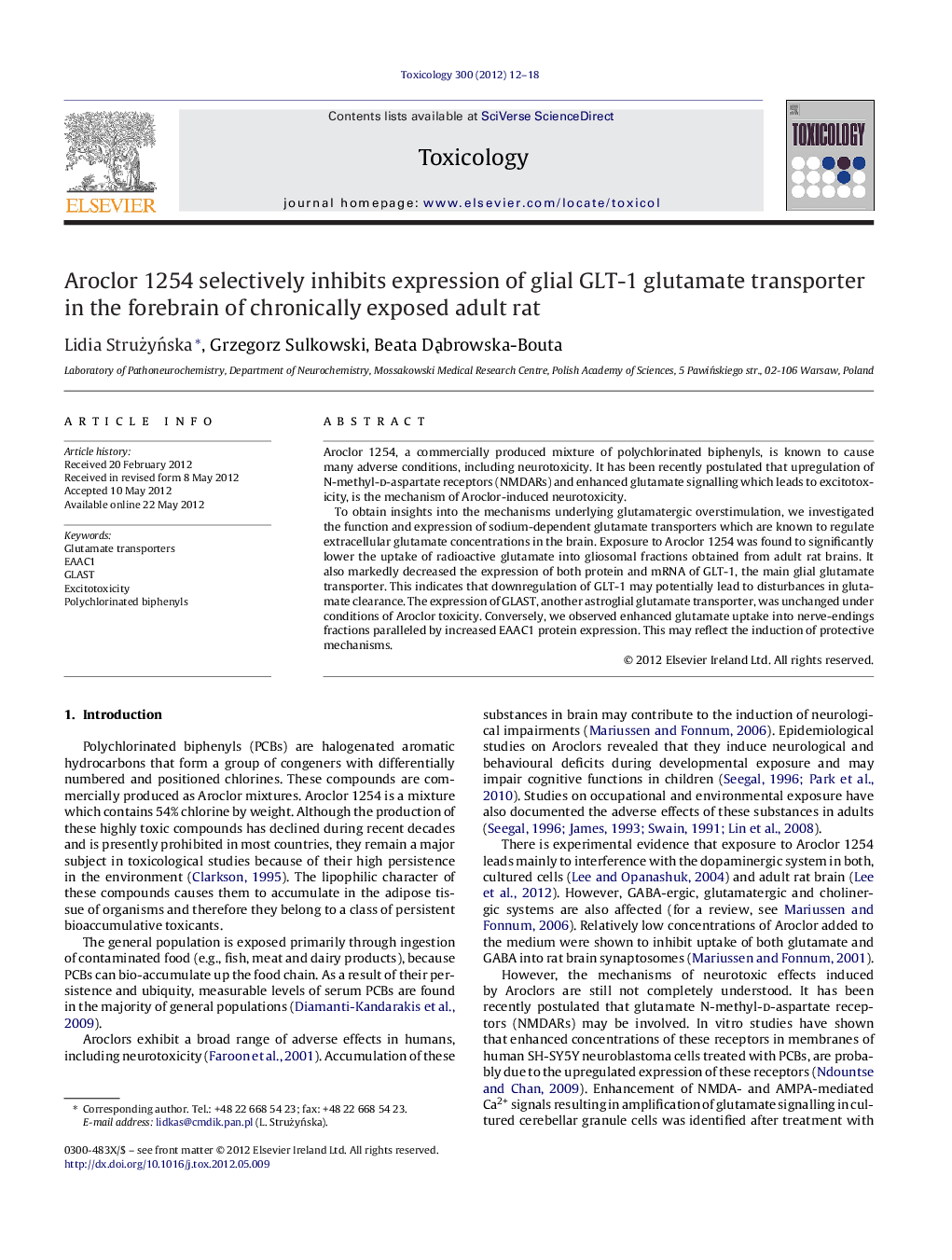| کد مقاله | کد نشریه | سال انتشار | مقاله انگلیسی | نسخه تمام متن |
|---|---|---|---|---|
| 2595879 | 1562357 | 2012 | 7 صفحه PDF | دانلود رایگان |

Aroclor 1254, a commercially produced mixture of polychlorinated biphenyls, is known to cause many adverse conditions, including neurotoxicity. It has been recently postulated that upregulation of N-methyl-d-aspartate receptors (NMDARs) and enhanced glutamate signalling which leads to excitotoxicity, is the mechanism of Aroclor-induced neurotoxicity.To obtain insights into the mechanisms underlying glutamatergic overstimulation, we investigated the function and expression of sodium-dependent glutamate transporters which are known to regulate extracellular glutamate concentrations in the brain. Exposure to Aroclor 1254 was found to significantly lower the uptake of radioactive glutamate into gliosomal fractions obtained from adult rat brains. It also markedly decreased the expression of both protein and mRNA of GLT-1, the main glial glutamate transporter. This indicates that downregulation of GLT-1 may potentially lead to disturbances in glutamate clearance. The expression of GLAST, another astroglial glutamate transporter, was unchanged under conditions of Aroclor toxicity. Conversely, we observed enhanced glutamate uptake into nerve-endings fractions paralleled by increased EAAC1 protein expression. This may reflect the induction of protective mechanisms.
► The main glial glutamate transporter, GLT-1, is downregulated in rat forebrain.
► The above event may lead to excitotoxicity under Aroclor toxicity conditions.
► Over-expression of neuronal EAAC1 reflects the induction of protective mechanisms.
Journal: Toxicology - Volume 300, Issues 1–2, 9 October 2012, Pages 12–18